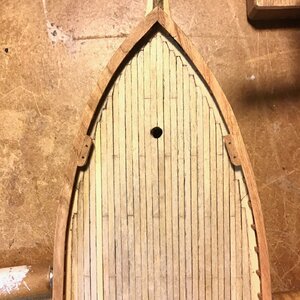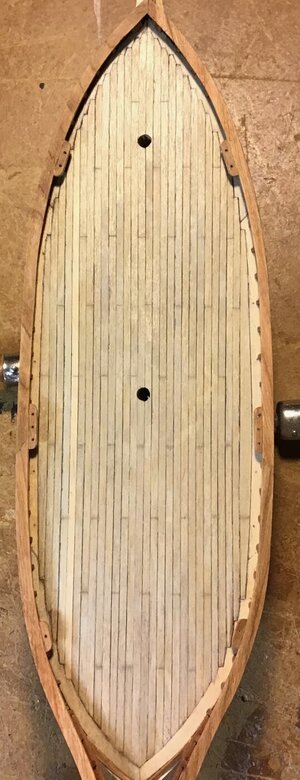- Joined
- Dec 4, 2022
- Messages
- 4
- Points
- 3
How do I get the black edges in my deck planking?
 |
As a way to introduce our brass coins to the community, we will raffle off a free coin during the month of August. Follow link ABOVE for instructions for entering. |
 |

I use a soft lead pencil against both edges. One thing you might consider - look at a few of the build logs in the forums, maybe find your ship, and read what each builder uses.How do I get the black edges in my deck planking?
ditto.I use a soft lead pencil against both edges. One thing you might consider - look at a few of the build logs in the forums, maybe find your ship, and read what each builder uses.
I blacken the edges with a black fabric marker pen (If you are in the U.S. the Joann chain of craft stores carries them). It will not run if the deck is later stained. Do not use a "permanent" marker like a Sharpie. It will smear if stain is applied on top.How do I get the black edges in my deck planking?

Magic Marker works for me , any color ..........How do I get the black edges in my deck planking?
Does the lead ever bleed when you varnish the deck?I use a soft lead pencil against both edges. One thing you might consider - look at a few of the build logs in the forums, maybe find your ship, and read what each builder uses.
I have used a black brush ( Pilot type ) applied to the sides of the deck strips and then start the deck planking.How do I get the black edges in my deck planking?
No. But, when sanding, you may pick up some lead and smear it on the deck, causing some minor staining. The best thing for a deck is scraping with a razor held in a scraper tool. It evens out the ridges and bumps but does not drown out the lines with fine sawdust like sanding does. You don't need to sand a deck at all if you use a scraper, and the results look surprisingly better.Does the lead ever bleed when you varnish the deck?


Perfect!I posted earlier about using a fabric marker to blacken the edges of deck planking. I just completed a deck, made from birch plywood, in this way and some pix are attached if anyone is interested in how this appears. Deck planks were laid in a single strip then butts were scribed in with a 4 plank repeat pattern. After applying a coat of Minwax natural stain the butt edges stood out without any darkening agent.
View attachment 345421View attachment 345422
Remember, depending on the wood, its dryness and the fluid of the marker, the ink may easily run along the grain. Try it on scrap first.Perfect!
I have found coating the deck planks with a clear wood sealer/conditioner and then using markers or paint for the caulking simulation works great…prevents bleed…blends well with a finish coat of clear polyurethane…just tedious to coat all the planks first with the sealer…MinWax has a “wood sealer pre stain conditioner” that works well for this…Remember, depending on the wood, its dryness and the fluid of the marker, the ink may easily run along the grain. Try it on scrap first.
